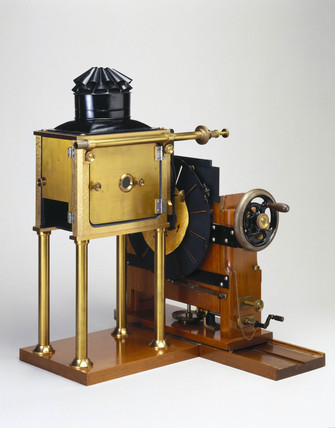
We thought that this artist linked in well with page 8 of the exam booklet, which is the fine art response to variation and similarity. This response was based on the artists Nick Greaves and Bluegreen Pictures.
Eadweard Muybridge
Eadweard’s photography of moving animals captured movement in a way that had never been done before. His work was used by both scientists and artists. He developed a miraculous process for capturing movement on film. This approach to photography influenced media and other motion animation industries to produce picture animation. In 1872, Muybridge began photographing a galloping horse in a sequence of shots. He eventually came up with a more complex method of photographing horses in motion. By 1879, he had proven that they do at times have all four hooves off the ground during their running stride. Over the next few years, he produced thousands of photographs of humans and animals in motion. Eadweard presented his photographic methods using a projection device he’d developed called the Zoopraxiscope.



This image portrays several images of a pig running. The sequence of photos shows how the pig is moving. The colour isn’t natural because of the camera that Muybridge used. This old camera that was used in the 1800s creates a sepia, vintage effect. He usually uses images of horses, but in this particular image, he used a pig to show the contrast between the two animals, and how they move in a similar way. The repetition of the images shows the variance of each image, and how each photo differs from the others due to the pigs movement. The way they are produced in a grid makes it easier to compare all the images.
Nick Greaves
He studied geology and environmental sciences at the University of Aston in Birmingham, England. His passion and interest in Africa took him to Southern Africa in 1976. Greave’s interests in wildlife, conservation & photography originally developed independently, but slowly all these came together over the years, and he was able to combine all these passions into his current position as a multi-tasker, dividing his time as a professional safari guide, photographer and author. Nick’s love of wildlife and the outdoors quickly led to an interest in photographing the world around him, and over the years his photography has become a never ending search to capture the moods and wildlife of Africa and elsewhere. This interest has led to a full portfolio covering much of the flora, fauna, culture, and heritage of Southern Africa.

This image taken by Greave’s is portraying the mushrooms that appear as part of the wildlife’s nature in Africa. The repetition of the mushrooms that spiral up the branch of the tree trunk shows the variance between the mushrooms- although, they are all of a very similar size, shape and colour, which makes all the mushrooms seem very alike – this is similar to Murbridge’s work as they both take photos of the same object, yet they all vary in their own ways. In Greave’s photo, he only displays his repeated objects (mushrooms) in one single image, instead of in a grid format like Muybridge portrayed his work. Maybe this was because in Greave’s photo, the mushrooms were all bunched together already, so that it was easy for him to take his repetition photography in one image instead of putting them together in a grid layout like Muybridge did. This photo has a lot of natural colours, due to Greaves taking this image in 1996; the technology of cameras and online software at this time is obviously a lot more improved than when Muybridge took his series of images of animals in the 1800s.
